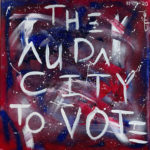From time to time I’ll use this blog to feature interviews with professionals that serve key roles in the fine art community. For the first post in this series I’ve interviewed international art dealer Reed V. Horth of Florida. Reed specializes in 20th century art and contemporary emerging artists. He was kind enough to answer two sets of questions for me; part one aimed at artists and part two aimed at art collectors. Bellow is the artists oriented portion of the interview. Enjoy!
–
There are several terms used to refer to individuals who sell art: dealers, brokers, & consultants. Can you explain if there is any difference between these terms? And if so, please describe what role these individuals play in the art buying / selling relationship?
These terms can often be substituted for each other as their meanings often overlap. Ultimately, our role as Art Professionals is to consult and give safe council to both buyer and seller (whether to an individual artist or to a casual buyer, serious or professional collector, investor, museum or institution… the role remains essentially the same). Generally dealers have artists or genres which they deal in a physical or virtual capacity. Brokers generally are interlocutors between a specific buyer and specific seller. Consultants are some combination of the two who literally consult, artists, buyers, sellers and publishers. I have personally served in each role, and been called upon to write contracts, advocate for both buyers and sellers, and deal with attorneys and intermediaries on behalf of all.
What is the average commission an artist can expect to pay to a reputable dealer or broker who sells a piece of their work?
This is entirely case by case and will involve myriad factors, not the least of which is the work which will go into building or enhancing a market. Things which must be considered are the existing size of the artist’s sphere of influence, the resume of the artist and the style of work he or she produces. An artist who has a geographical following may not translate to other markets with the speed and vigor they might hope for. These markets may require a broader marketing plan and this equals higher fees for the broker or dealer. Often, as an artist expands, I have seen “Keystone” pricing structures (Example: The artist receives $1000 for a work, the marketer/Dealer “Keystones” the price to $2000. This incorporates their fees and the expenses inherent in marketing.)
Sometimes the role of the broker or dealer and the keystone pricing model are an area of confusion and debate. If you have a representative who places your work not just with private buyers, but also solicits galleries, and other art professionals, the artist’s fee is only one part of the overall “Wall Price”. (Example: The artist receives $1000 for a work, the marketer/broker “Keystones” the price to $2000. The gallery has a “Wall price” of $4000.)
With the above mentioned pricing structure in mind, would you suggest artists price their work with the keystone pricing already built in, or just price with their own fee in mind and allow the sales people who market the work to add their fees and increase the price of the work accordingly?
No, I do not recommend that artists try to build their own pricing model, as it inhibits and puts restraints on galleries, brokers and intermediaries who may not price in this fashion. Artists should find a fair price they are comfortable with and charge that amount. This keeps it simple for all.
How common would you say it is for a gallery to buy an artist’s work wholesale (like in most other retail industries) as opposed to taking on the work through a consignment arrangement?
I am not necessarily an outright advocate for open consignments. Artists must always be on the lookout for predatory dealers whose ethics may be “Questionable”.(Thank you!)I have advocated a “Buy one- Consign one” model. This is obviously case by case, but you should speak with other artists who the gallery represents in order to get an unblemished, third-party “off-the-record” appraisal of the way they deal with their artists.
Would it be considered gauche for an artist to request a wholesale purchase of their work instead of a consignment contract if such an arrangement is not a gallery’s normal practice?
Artists have assets… namely, their art. While all galleries have their own policies, and we must be respectful of their practices, you must protect yourself and not rely solely on the dealer to provide you sage council. Go with your gut. If it seems too good to be true… it probably is.
Good advice. If a gallery offers a 10% discount which scenario do you think is fair and please explain why: gallery absorbs full cost of discount, artist and gallery split cost of discount, artist absorbs full cost of discount.
Artists should price their artwork reasonably to their dealers. If they are overpriced to begin with, the gallery may need to ask you to eat a portion of the discount in order to get a deal done. This is fair for them to ask and fair for you to accept. This being said, if your prices are reasonable, the gallery should not need to go to you and ask you for a 10% discount as it is a small portion of the whole which can be made up for in bulk sales.
Are there some quick ways that an artist can determine whether or not their work is over or under-priced for a particular market?
Yes…. Are they selling? If not, pricing may be a factor. If so, prices may need to be bumped up. Build a dialogue with your representatives. Most dealers will let you know when works are moving more rapidly, as they will need more inventory. A solid dialogue with a trustworthy partner will allow you both to evaluate whether or not the market can bear a price hike, or whether or not the pricing is excessive. But, don’t raise your prices more than once or twice per year.
When an artist wishes to establish a relationship with a gallery or other type of art dealer, what is the best way to make first contact; phone call, email or cold call visit?
Dealers and brokers have busy schedules and their time should be respected, therefore it is probably best to make initial contact in the most non-intrusive fashion possible. I suggest a letter or email with one or two photos (low resolution attachments for email), followed up by a call to ask whether or not the information was received. If the work is well received, see if you can schedule an appointment to meet directly with the decision-maker in the business.
Why is it important that an artist who has gallery representation NOT sell work directly to clients at a lower price than the gallery?
First, it is unethical. You hire the gallery to do a job for you, just as they hire you to do a job for them. They depend on you to be ethical and not circumvent their efforts. A tremendous amount of time, money and energy is expended to build a market for an artist, market them and expand their sphere of influence. If this marketing yield a client interest, the client may try to go directly to you and it is your responsibility to send them back to the gallery who has worked so hard for you.
Name three qualities a dealer tends to look for in an artist and the artist’s work that make them want to represent the artist.
Talent: Number one factor. It comes in all forms depending on what the dealer likes, has a market for and specializes in. Bear in mind there are a lot of talented singers, but only one person wins American Idol.
Originality: This can take many forms. (Obviously, as this is the definition of “original”) This goes for media, technique, personality, genre, theme, and everything associated with your art. What separates you from everyone else?
Professionalism: Dealers depend on their artists to produce quality work consistently. This is their business, not just their passion. Artists who treat this as a profession tend to fare better with business owners who have overhead, staff and bills to pay.
Name some behaviors or qualities that can make a dealer or broker NOT want to deal with an artist.
Talent: Number one factor again. Some artists are good, but not great. It sometimes takes a fresh set of unbiased eyes to differentiate between the two. While myriad factors exist which define talent, it is entirely subjective and should be taken constructively.
Originality: If your artwork looks, feels and is related to everything else in a particular gallery, there may not be room for artistic competition in the existing contracts that gallery may have.
Professionalism: If an artist is unreliable, unethical and unprofessional, it is difficult for dealers to reconcile. If an artist sells directly to a client when the dealer’s work has clearly been the cause, it is unethical. If an artist cannot call their dealer or representative back when they are working on a deadline, it is unprofessional. Dealers often have a very narrow window in which to close a sale, before the buyer goes elsewhere or finds another item to purchase. Delays mean money out the window. If an artist displays unprofessional behavior, particularly when clients are present, that dealer, their other artists and all their future business may stand to be greatly damaged. Contracts are put in place for a reason. Make certain that they are fair to you and have terms you can live with. Then, once signed, live up to those terms. This is what you would expect from your dealer, right?
Can you name several “red flags” artists should look for when deciding which galleries and dealers to stay away from?
While there is no tried-and-true system for determining which galleries to deal with… Check them out. Talk to artists, neighbors, the local magazines or newspapers. Oftentimes, they will have good advice about individual galleries that you might not hear from the staff. Never sign contracts unless you are 100% certain you can live with the terms of it.
In your opinion, what is a fair “exclusivity” clause in a contract between an artist and gallery?
Exclusivity should be regionalized based upon geography, performance, sphere of influence and potential upward mobility. As a general rule, you should not have more than one gallery in any one town when you are starting out. If they are doing a good job and selling your work at reasonable intervals there is no need for change. Look for outlying cities that might have circles who would also enjoy your work and may have galleries to solicit. As that sphere grows, so will your business.
How has the Internet changed the fine art industry?
Anyone can be “discovered”. Whether it is dance, song, writing, art or politics, anyone has a shot when you have 200 Million potential viewers. That does not mean everyone will, but the information is out there. This also means that you will have more chances of being solicited directly and testing your allegiances to your dealers. Remember, if a gallery has done their job well you may have a spike in inquiries directly to you. This means they are doing a good job and they deserve to be rewarded for it. In the long run, these referrals back to the gallery will pay you dividends.
How do you see the fine art industry changing in the next 5-10 years?
I am not an artist, although I sometime wish I was… YOU determine the future of art. It is up to us in the industry to keep pace.
–
Thank you Reed!
Keep watching the blog for part two of the interview featuring questions and answers for art collectors. www.robinrile.com
Further information:
S. C. Versillee has been creating images since the age of three and under her mother’s early tutelage she honed her craft, developing a life-long love and respect for the arts.
A contemporary realist painter who works primarily in oils, Versillee sold her first painting at the age of 16 to a local shop owner and participated in her first group show at the age of 18. She has been juried into various distinguished fine art exhibitions including, the Catharine Lorillard Wolfe Art Club and the National Oil and Acrylic Painters Society’s “Best in America” annual show. She has appeared in both print and media and was included in a 2006 book, “Painter: The World’s Finest Painter Art”. Currently she has collectors of her figurative works throughout the United States. Some of Versillee’s other interest include creative writing, web design and research on the subjects of anthropology, symbolism and myth.
S. C. Versillee earned a Bachelor’s Degree in Art from the Cleveland Institute of art in 1999 and a Master’s in Library and Information Science from Kent State University in 2005. She currently works and lives in North East Ohio. She is an associate member of the International Guild of Realism and Oil Painters of America. http://www.scversillee.com/







